Ergebnisse
Im Rahmen des Forschungsprojektes zur „Archäologischen Bestandsaufnahme der Küste Thrakiens“ beteiligt sich die Abteilung Istanbul unter der Leitung von Dr. Alkiviadis Ginalis seit 2020 an den von Prof. Şengül Aydingün der Kocaeli Universität durchgeführten archäologischen Untersuchungen auf der Firuzköy Halbinsel am Westufer der Küçükçekmece Lagune.
Entlang der Uferzonen der Küçükçekmece Lagune konnten neben frühbyzantinischen Basiliken, Zisternen und weiteren Nutzungsgebäuden, Reste von Seemauern sowie ausgedehnte Hafenstrukturen entdeckt werden. Diese scheinen im Zusammenhang mit maritimer Kommunikation und so womöglich mit dem Bathynias Fluss als zentrale Verkehrsachse zu stehen, was auch von verschiedenen Schiffsgrafitti in einer Höhlenkirche 1km flussaufwärts unterstützt wird.
Die komplexen architektonischen und archäologischen Hinterlassenschaften, welche unter anderem Kaianlagen, Landungsstege und weitere Küstenstrukturen wie Werkstätten oder Lagerhäuser umfassen, deuten auf einen Bauaufschwung und intensiven Seehandel vor allem ab der Spätantike hin.
Aufgrund der Siedlungskontinuität von der Antike bis in das Mittelalter kann die Grabungsstätte auf der Firuzköy Halbinsel am Westufer der Küçükçekmece Lagune womöglich mit der antiken thrakischen Hafenstadt Bathonea identifiziert werden, welche den gleichen Namen wie der benachbarte Bathynias Fluss (heute Sazlıdere) trägt. Eine Identifizierung einer potentiellen Nachfolgesiedlung in byzantinischer Zeit ist noch ungeklärt. Allerdings lassen ausgedehnte materielle Hinterlassenschaften, welche erstmals 2023 mit Hilfe geophysikalischer Prospektion am Nordufer der Küçükçekmece Lagune lokalisiert werden konnten, eine mögliche Zuordnung zu einer der zwei in den Schriftquellen genannten aber bislang noch nicht verorteten byzantinischen Toponymen „Schiza“ oder „Melantias“ im Hinterland Konstantinopels zu. Die Siedlungs- und Hafenaktivitäten direkt an der Flussmündung des Bathynias stellt ein bedeutendes Beispiel für die Entwicklung und die Art sowie der Einfluss landwirtschaftlicher und industrieller Nutzung von Flusslandschaften auf die Siedlungsgeschichte in Anbindung zu maritimen Handelsnetzwerken dar.
Literaturliste
- Aydıngün, Ş. (ed.) 2017. İstanbul Küçükçekmece Göl Havzası Kazıları. Excavations of Küçükçekmece Lake Basin (Bathonea). Istanbul.
- Bakirtzis, Ch., Zekos, N., Moniaros, X. (eds) 2011. Byzantine Thrace. Evidence and Remains. Proceedings of the 4th International Symposium on Thracian Studies. Byzantinische Forschungen 30. Amsterdam, Hakkert.
- Ginalis, A. (ed.) Forthcoming. Harbours of Byzantium. The Archaeology of Coastal Infrastructures. Oxford, Archaeopress. (in print)
- Ginalis, A. and Aydingün, S. Forthcoming. Traces of Early Ottoman Maritime Activities in the Surroundings of Constantinople. In K. Baika (ed.), Mediterranean Harbour Cities I. Proceedings of the 1st International Conference on Harbour and Coastal Archaeology. Leiden, Sidestone Press. (in print)
- Ginalis, A. and Peev, P. (eds) Forthcoming. The Western Black Sea Coast. Networks and Connectivity. Byzantioς. Studies in Byzantine History and Civilization. Turnhout, Brepols. (in preparation)
- Ginalis, A. 2022. The so-called “Küçük Liman” on the Firuzköy peninsula: A preliminary archaeological report on harbour studies along the Küçükçekmece Lake. In Ü. Kara and H. Aydingün (eds), International City and History Symposium on Avcilar: 143-161. Istanbul, Avcilar - Municipality.
- Ginalis, A. and Ercan-Kydonakis, A. 2021. Some Reflections on the Archaeology of the Late Antique and Byzantine Harbours of Constantinople, in F. Daim and E. Kislinger (eds), The Byzantine Harbours of Constantinople. Byzanz zwischen Orient und Okzident 24 (Interdisziplinäre Forschungen 10): 33-72. Mainz.
- Ginalis, A. and Peev, P. 2020. Inventory of late antique and medieval ports along the Western Black Sea. Pontica 53: 381-390.
- Ginalis, A., Heher, D., Külzer, A., Preiser-Kapeller, J., Simeonov, G. 2019. Harbours and Landing Places on the Balkan Coasts of the Byzantine Empire (4th to 12th Centuries). In L. Werther, H. Müller and M. Foucher (eds), European Harbour Data Repository. Vol. 4. Jena.
- Kara, Ü., Aydıngün, H. and Enez A. (eds) 2022. International City and History Symposium on Avcılar (October 21st-22nd 2021). Istanbul, Avcılar.
- Külzer, A. 2016. Die thrakische Chersones als Geschichts- und Wirtschaftsraum in frühbyzantinischer Zeit. In M. Sayar (ed.), Thrace and Thracians between two Continents 6000 BC – AD 600. Proceedings of the 11th International Congress of Thracology, 8-12 Nov. 2010: 407-424. Istanbul.
- Külzer, A. 2008. Ostthrakien (Eurōpē). Tabula Imperii Byzantini 12. Vienna.
- Külzer, A. 2010. Die Thrakische Propontisküste. Beobachtungem zum Siedlungsbild in Byzantinischer Zeit. Kölner Jahrbuch 43: 429-441.
- Öniz, H., Kaya, H. and Aydıngün, Ş. 2014. A Harbour Structure at Beylikdüzü, Istanbul. The International Journal of Nautical Archaeology 43/1: 179-184.
- Ousterhout, R. and Bakirtzis, Ch. 2007. The Byzantine Monuments of the Evros/Meriç River Valley. Thessaloniki.
- Rizos, E. and Sayar, M. H. 2017. Urban Dynamics in the Bosphorus Region during Late Antiquity. In E. Rizos (ed.), New Cities in Late Antiquity. Documents and Archaeology: 85-99. Turnhout.
- Stanisławski, B. 2017. Project: Constantinople/Istanbul – Küçükçekmece the Destination Port of the Way from the Varangians to the Greeks, a centre of Byzantinization of the Rus’ Community – Aims, Sources and Objectives. In İstanbul Küçükçekmece Göl Havzası Kazıları: 499-517. Istanbul.

